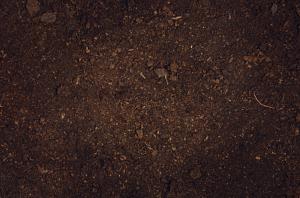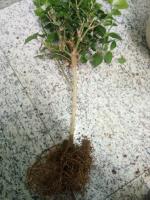Introduction
Burnt soil, also known as charred soil, is soil that has been burned intentionally or unintentionally. It is known to have both positive and negative effects on plant growth. In this article, we will explore whether burnt soil is good for plants.
The Benefits of Burnt Soil
One of the significant benefits of burnt soil is its ability to improve soil fertility. When organic matter is burned, it is converted into biochar, which is a stable form of carbon. Biochar is resistant to decomposition and can remain in the soil for hundreds of years. It can significantly reduce the loss of nutrients from the soil and increase the soil's water-holding capacity.
Burnt soil is also known to help plants grow faster and larger. The biochar in burnt soil can improve the soil's physical properties and provide a habitat for beneficial microorganisms. These microorganisms help break down organic matter and release nutrients that are available for plants to absorb.
The Drawbacks of Burnt Soil
While burnt soil has several benefits, it also has its drawbacks. One of the significant drawbacks is the loss of nutrients during the burning process. When organic matter is burned, some of the nutrients are lost as gases, reducing the soil's overall nutrient content.
Additionally, if the soil was burned unintentionally, there may be other pollutants that were released during the fire. These pollutants can be harmful to plants and reduce their growth and overall health.
When Burnt Soil is Best to Use
Burnt soil is best to use when it has been intentionally burned, and the fire was controlled. In these instances, the soil can be manipulated to improve its physical properties and provide a habitat for beneficial microorganisms. If the soil was burned unintentionally, it is best to avoid using it, as it may contain pollutants that are harmful to plants.
Burnt soil is also best to use on plants that require nutrient-poor soils. Some plants, such as succulents and cacti, thrive in soils that have fewer nutrients. The biochar in burnt soil can significantly improve these soils' physical properties, making it easier for these plants to grow and thrive.
Conclusion
In conclusion, burnt soil can have many benefits for plant growth, but it is essential to consider its drawbacks. When used intentionally and under controlled conditions, burnt soil can improve soil fertility, improve soil physical properties, and provide a habitat for beneficial microorganisms. However, if the soil was burned unintentionally, there may be pollutants present that could be harmful to plants. Ultimately, the use of burnt soil depends on the specific plant's needs and the individual gardener's techniques and preferences.

 how many times do yo...
how many times do yo... how many planted tre...
how many planted tre... how many pine trees ...
how many pine trees ... how many pecan trees...
how many pecan trees... how many plants comp...
how many plants comp... how many plants can ...
how many plants can ... how many plants and ...
how many plants and ... how many pepper plan...
how many pepper plan...































